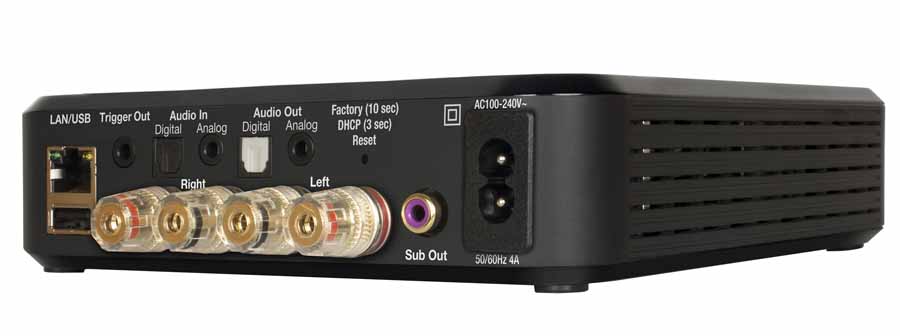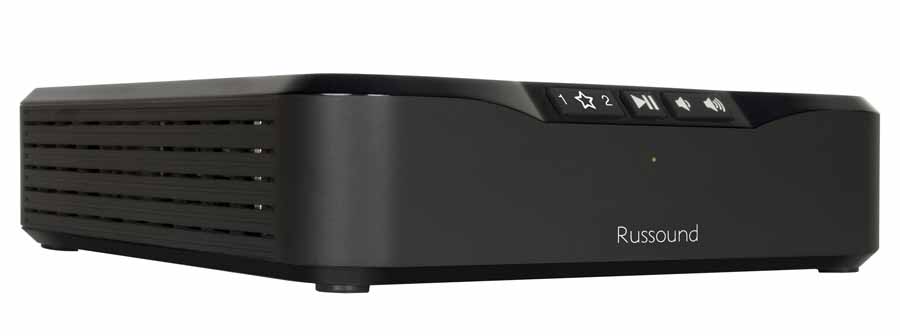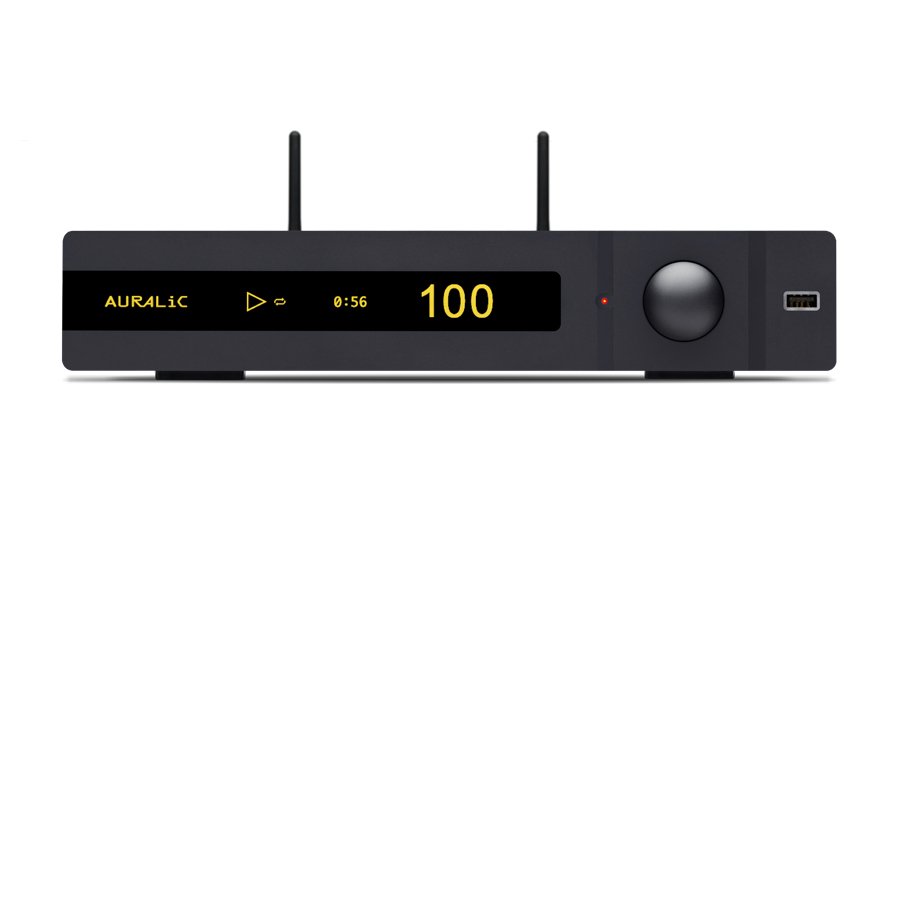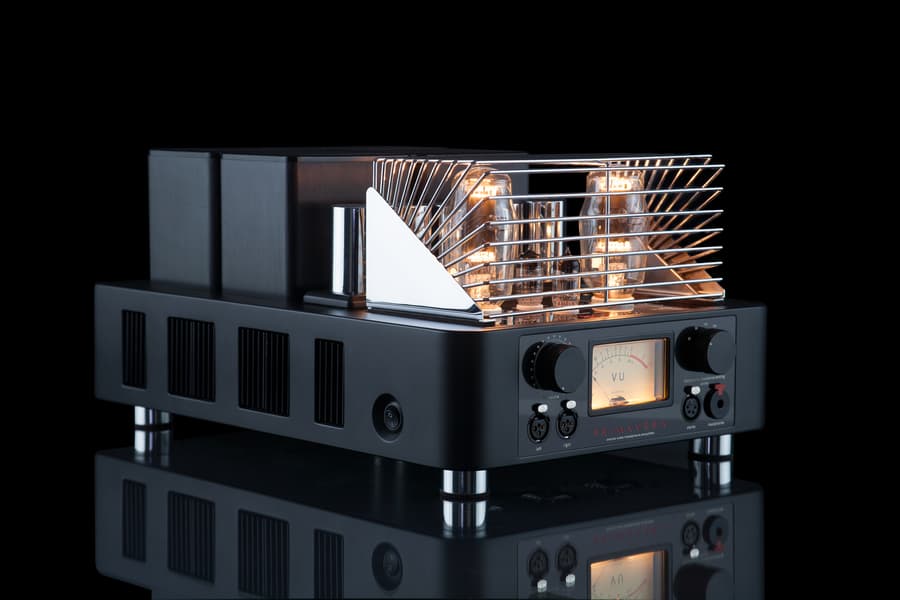Hifi Pig’s Millennial Scribbler Harry Smith takes a look at American brand Russound’s MBX-Amp, a one-box streamer and amplifier costing £599 in the UK.
 Streaming has rapidly become many people’s main source of music and has made its way into more of the world of Hifi and music-loving homes with the introduction of high-fidelity services such as Tidal, Qobuz and others.
Streaming has rapidly become many people’s main source of music and has made its way into more of the world of Hifi and music-loving homes with the introduction of high-fidelity services such as Tidal, Qobuz and others.
Russound is an American brand that been going since 1967 based in New Hampshire and specialising in multiroom audio systems.
The Russound MBX-Amp is a one-box solution to all your Hifi needs and adds a lot of modern functionality to your passive speakers. Russound also makes a preamplifier with the same design that adds the streaming functionality to your already amped up system.
DESIGN AND CONSTRUCTION
The MBX-AMP is a compact bit of kit (measuring 21cm wide, 17.8cm deep and 4.5cm high) and definitely looks the part. It is made out of aluminium and a combination of matte and glossy plastic. It is only available in black.
I’m personally not a fan of glossy plastic as I feel that it is a fingerprint magnet and scratches easily, but the restrained use of it here doesn’t bother me too much. Although I wouldn’t call it a premium build it is definitely well-built. The Buttons on the front, although I never found myself using them in day to day use, have a good “clickiness”. You could argue it looks a bit emotionless and boring but I don’t think the Russound wanted it to draw too much attention to itself. They even suggest attaching it to the back of your wall-mounted TV.
It is passively cooled and gets quite warm to the touch after using it for a few hours but it never got worryingly hot.
Russound doesn’t include a remote in the box and with any other amplifier/ streamer I would see this as a negative but the fact is, I didn’t miss it. The truth is that all the controls you need are already built into the app so why bother?
File-wise the Russound will play MP3 (CBR, VBR), WAV (8, 16-bit), OGG Vorbis, FLAC (8, 16-bit), AAC, AAC+ with support for up to up to 24-bit/192kHz. Some may miss DSD support but I don’t have any files of that kind and so didn’t.
SETUP AND FUNCTIONALITY
This MBX-Amp is hands down one of the easiest streaming devices I’ve ever set up. You have two options when it comes to this. Either download the MyRussound app to connect it to your network. Or, if you have an Android smartphone/tablet, go on the Google Home app (that should already be installed), press “add device” and it will detect the Russound amplifier and connect to your network without the need of faffing around with passwords. This is thanks to the integrated Chromecast functionality and it as seen as one by all your compatible devices.
I rarely find myself using voice control but it is important to note that it supports both Amazon Alexa and Google Now commands straight out of the box.
The app itself is functional and easy to use, although I feel the user interface is a little dated. It looks like something from an older iPhone. Also, there is a slight delay of about 3 seconds when opening the app even while playing music where the app is “searching for available devices”. These are small annoyances and could easily be fixed with a software patch. (I was using a Pixel 3 with Android 9.0). I don’t know how the experience differs for iPhone users but my guess is that it is very similar.
Although I only used the MBX-AMP in one system, you are able to install up to 16 of them (or the preamp) over the same network for a multi-room setup and control each individually with the MyRussound App. It’s very versatile with a plethora of inputs/outputs including a 3.5mm analogue input, an optical digital input, plus a USB socket for local music files. It also features a dedicated subwoofer output.
SOUND QUALITY
I tested the MBX Amplifier with a pair of Wharfedale D320s bookshelf speakers but at 50 watts per channel, this little amp has the power to drive much bigger speakers than my own.
The sound quality was impressive overall and I was a big fan of the ability to adjust the equaliser on the fly through the app.
Without messing with the bass or treble levels, the MBX is wonderfully transparent and didn’t add any unwanted colouration to the sound. At lower volumes, you can activate an “Equal-Loudness Contour” that ups the level of bass but overall provides a fuller sound without being loud. I actually found myself using this feature quite a lot being in a small room but this amplifier definitely has the oomph to fill a much larger space.
The ability to stream 24Bit/192kHz high-resolution audio is very welcome and I did the majority of my listening on Qobuz. I found myself listening to album after album. Although while switching between tracks I noticed a slight hiss when there’s no audio playing. You can’t notice it in the background when listening but it is a little off-putting between tracks or when waiting to play music. You can mute the amplifier from within the app and this gets rid of the hissing problem. Perhaps having the ability to auto-mute in between tracks in a software update of the MyRussound App would be a long-term solution to this problem.
I tried to find fault with the audio performance by playing testing tracks such as “Contact” by Daft Punk but it managed to reproduce it very well. Not overwhelmingly bassy while providing plenty of detail in the more complex parts of the track.
Acoustic guitars were probably the only thing that I found didn’t sound as natural as I’ve heard on some valve amplifiers. The live version of “Keith Don’t Go” by Nils Lofgren definitely showed this flaw. If that’s a dealbreaker for you, get the MBX-Preamp and pair it with your favourite valve amplifier.
It wasn’t overwhelmed on the bass front on my new favourite track to test bass performance “Black Skinhead” by Kanye West managing to stand up to the powerful drums and violent vocals.
The bottom line is that anyone can get a pleasurable listening experience out of the Russound MBX-Amp thanks to the personalisable levels of bass and treble. A great performer at low and high volumes. I do have to keep reminding myself that it costs under £600.
CONCLUSION
The Russound MBX-Amp is definitely a fine example of what is to come in the future of mass-market HiFi. We are slowly, in many circles, moving away from big bulky amps and searching more and more for a compact, one-box solution. Pair this with an affordable pair of speakers and you’ve got yourself a very competent streaming system for under £1000. The ability to place multiple MBX systems around the house and jump from one to the other with ease fights the case of putting one of these in every room of the house.
It lacks some of the emotion or “wow-factor” that you can get from some amplifiers that cost more but most don’t have anywhere near the same levels of functionality as the MBX-Amp. One of the areas Russound MBX scores over one box solutions that include speakers is that you can tune the system using your preferred loudspeakers.
Put simply, it does its job and does it well!
AT A GLANCE
Build Quality: Although it is predominantly made of plastic, it is still solid and well built.
Sound Quality: Well-balanced at both high and low volumes. At 50W per channel, it is a very powerful amplifier considering its size.
Value for Money: Quite affordable considering the sheer amount of functionality this can add to your system.
Pros: A compact, versatile solution for most people’s audio needs without skimping on sound quality.
Cons: I feel that the MyRussound App needs a little work but this shouldn’t be a dealbreaker as this can be fixed with software updates in the future.
Price: £599
Harry Smith (Millennial Scribbler)
Review System: Wharfedale D320 speakers with cables by Atlas.
Manufacturers Specifications
Frequency Response: 20Hz to 20KHz
Speaker Output 50 Watts Per Channel @ 8ohms, 70 watts @ 4 ohms
Audio Outputs Analog – Stereo Audio RCA, Digital Optical, Subwoofer Out
Line Audio Output 2V rms
Audio Inputs 3.5mm Analogue Stereo Audio, Digital Optical, USB2.0 Media Playback
Communication Ports Ethernet RJ45 10/100 BaseT
Wi-Fi 802.11ac, dual band
Bluetooth Audio Support Yes
Subwoofer Out Low Frequency Filter: 80Hz
Trigger Output 12vDC @100mA
Music File Formats MP3 (CBR, VBR), WAV (8, 16-bit), OGG Vorbis, FLAC (8, 16-bit), AAC, AAC+ (supports up to 24-bit/192kHz)
Power Requirements 12VDC, 200 watts
Product Dimensions 8.25”W x 7”D x 1.75”H (21cm W x 17.8cm D x 4.5cm H)
Product Weight: 1.5 lb (0.68 kg)






















































































































































































You must be logged in to leave a reply.